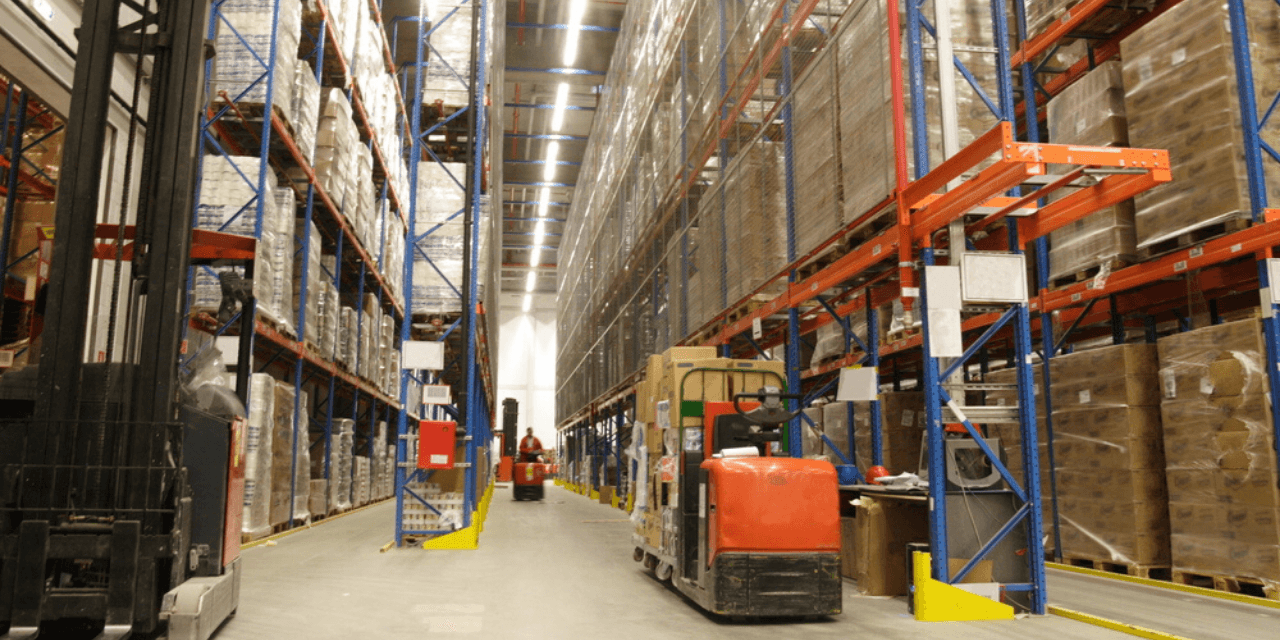Successful logistics is the result of a combination of factors: customer satisfaction, employee management and increased efficiency through optimization of existing processes. In an ever-changing world, the industry is now faced with new challenges: it has to get on top of environmental issues, and anticipate future development and innovations.
1. Customer experience: the primary objective of logistics
Customer experience is a key factor for a successful business. And gaining new customers requires more effort than retaining existing ones.
A positive customer experience not only makes a customer come back, but also, and more importantly, likely to recommend your business to his or her immediate circle o acquaintances. By making sure your customers are satisfied, you gain an excellent reputation and a naturally growing customer base.
Satisfaction is a combination of several elements, including:
- Rapid delivery times.
- Real-time delivery tracking.
- A simple and efficient returns policy that’s easy to understand and offers acceptable solutions to customers’ problems (free return or exchange, quick refund etc.).
- Free or affordable shipping, with different delivery options (home, collection point etc.).
- Real transparency on prices, delivery and returns policy.
To attract consumers and bring them back to an e-commerce site, it's not enough to offer them a wide choice of goods or attractive prices.
Delivery, including the selected delivery option and shipping costs, is one of the most important elements in customer satisfaction. When the delivery fails to live up to expectations, many customers will not return to the merchant’s website.
Not surprisingly, delivery is often experienced a stressful experience for consumers: there is the danger of loss or theft of parcels, unclear information on delivery conditions, tracking failures, impatience, and so on. Not to mention the often exasperating formalities to be completed when a parcel is finally declared missing and a refund needs to be issued.
All these fears are compounded by the anxiety that the products may not be the right ones after all, and will have to be sent back. This is all the more true when an order contains valuable objects.
Effective real-time tracking, clear and up-to-date information, and the ability to easily return products are key factors in securing customer satisfaction: for you it’s practical, for the customer it’s reassuring. That’s why every step in the delivery process has to be addressed by your logistics strategy.

2. How do we include the environment in our logistics strategy?
Environmental issues are of increasing concern to consumers. As they grow increasingly informed and aware, they view environmental issues as essential.
Large companies and their supply chains are regularly singled out as major contributors to pollution, and this reality runs counter to the expectations of today’s consumer.
The logistics of the future must take sustainable development into account:
Reducing its carbon footprint is the major challenge facing the industry.
Solutions are already emerging to meet this challenge, including:
- The use of GPS solutions to determine routes which are shorter and therefore less costly and less polluting.
- The introduction of efficient recycling services to reduce waste, and the use of greener materials to reduce packaging pollution and waste.
- Re-injecting returned goods into the supply chain instead of simply destroying them. A good example is Amazon, which has been repackaging products for several years now: goods returned by customers (wrong size, wrong product etc.) are repackaged and then returned to the sales circuit at a reduced price. It’s truly a win/win situation: this procedure not only limits waste, but also prevents the destruction of almost new products and the resulting loss of sales: while consumers can benefit from more attractive prices.
Diligent supply chain management is essential when implementing such solutions. But the investment is rewarded handsomely.
Companies that make a real effort to be cleaner and reduce their carbon footprint are becoming more popular with consumers.
Paying attention to environmental issues is not only good for the planet, therefore, it's also an effective way to win consumer loyalty.
3. Inventory control and visibility for successful logistics
In today’s market, it’s essential to know exactly how much stock you’re holding, and exactly where it’s located - in real time. This is THE pre-requisite for accurately managing stock and product workflows , anticipating stockouts and increasing responsiveness.
Reaching this level of efficiency is a real challenge in supply chain management, but it's necessary. And new technology can help us reach it.
Examples include real-time track and trace - a RFID (Radio Frequency Identification) tag affixed to products makes it possible to know exactly where the products are at any time.
This gives you full visibility of stocks, quantities, and status: in transit, in stock, out for delivery, or being returned.
Full supply chain optimization means full visibility, as one improvement leads to another:
- Better managed warehouses: the right quantities at the right time, the right number of employees to process orders at each moment.
- Cost reductions: product track and trace, the right number of employees, automation of processes: all of these elements make it possible not only to make savings, but also to reduce errors.

4. Better management of employees
Logistics is a sector where many professions converge: carriers, drivers, order pickers etc.
This requires highly-efficient management, not only for a satisfactory overview of all employees but also to ensure good coordination between the different departments and teams, thereby ensuring they have a secure working environment and clear information to work by.
Organization and communication are the key to success:
- Effective communication: each employee needs the right information at the right time. We’re using “information” in the broadest sense here: it may concern employees of the same department, or employees belonging to different departments. We also have to make sure the relevant information is communicated to all relevant actors. Synchronizing information with our various supply chain partners is worth considering, therefore.
- Good organization: warehouses and their different zones need to be properly designed to limit unnecessary movements and the risk of accident. This boosts productivity and provides a safer working environment.
The management of your employees is not just a detail, and not just a question of improving their productivity or preventing accidents at work: the new consumer expectations now extend to how companies treat their employees.
The introduction of CSR (Corporate Social Responsibility) regulations is moving in the same direction, in urging companies to make a positive impact on society. This positive impact is defined in particular by:
- Respect for the environment, sustainable development.
- Good employee relations and working conditions.
- Respect for human rights.
Here again, what’s a necessity is also a benefit for the enterprise: good working conditions make workers happier, and happy workers are more productive.

5. Improving existing logistics processes
As technology advances and new business and consumer needs evolve, logistics processes have to be optimized accordingly. Each element has to be analysed to ensure it's fully fit for purpose.
All it takes is one weak point in the chain for the whole logistics process to suffer: therefore we have to be as attentive to the details as to the big picture.
To identify vulnerabilities in your supply chain, you may need to conduct an audit. The introduction of management software and the adoption of effective supply chain management allow all weak points to be identified and then eliminated.
To oversee the good performance of your warehouse, it’s essential to monitor a battery of KPIs covering metrics such as number of orders processed daily, number of orders completed, number of errors, orders delivered on time etc. All of these factors determine the efficiency of your supply chain.
6. Forecasting changes in your business and making the right technology choices (improving warehouse processes)
Naturally enough, many enterprises start up business with limited storage facilities and then move to more spacious premises when their growth makes this step essential. A more practical solution is to opt right from the outset (or soon afterwards) for a warehouse that can evolve with your business.
It’s essential to anticipate the development of your business by making sure your warehouse can evolve to meet future needs - especially by allowing subsequent developments at lower cost thanks to scalable and flexible solutions.
There are various options here, such as modular storage systems that allow larger volumes of stocks to be stored over time, or modular and flexible conveyor and robotics systems on the goods to man model, which allow you to maintain a certain agility within your warehouse.
You also need to keep your eye on the emerging technologies: some elements of process automation involve the addition of extra machines and robots, which requires optimized workflows and layouts.
Installing a modular and flexible system frees you from the constraints imposed by legacy equipment when the flow of goods increases very rapidly over a short period, for example.
The challenges of logistics are many and varied. It’s as much a question of optimizing what exists as of accommodating the future. Social and environmental issues are increasingly live issues for consumers, and this means companies have to take their share of responsibility.
The new challenges involve change, and sometimes investment too, but they all ultimately improve the company’s reputation and efficiency.



Laisser nous votre commentaire